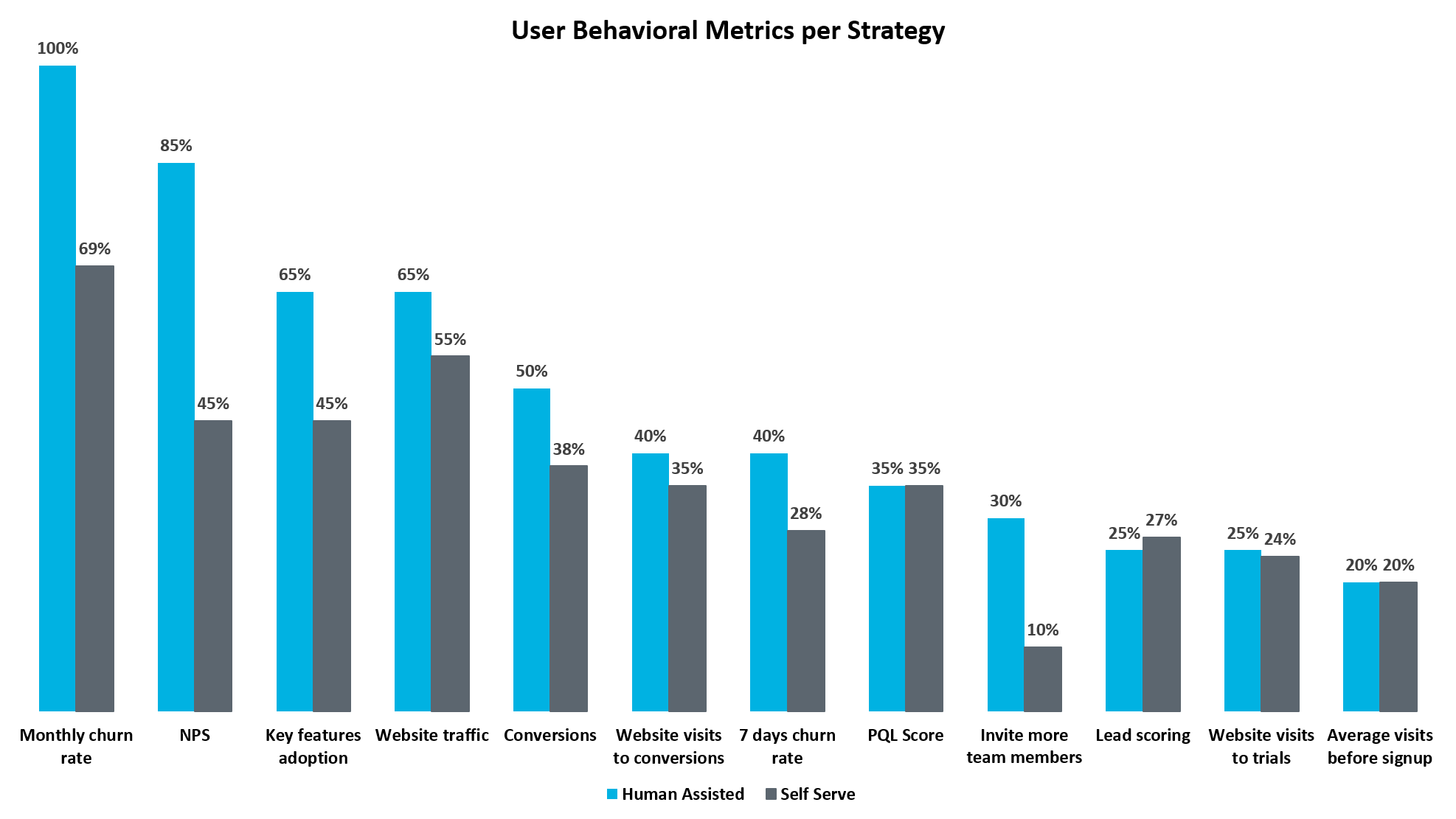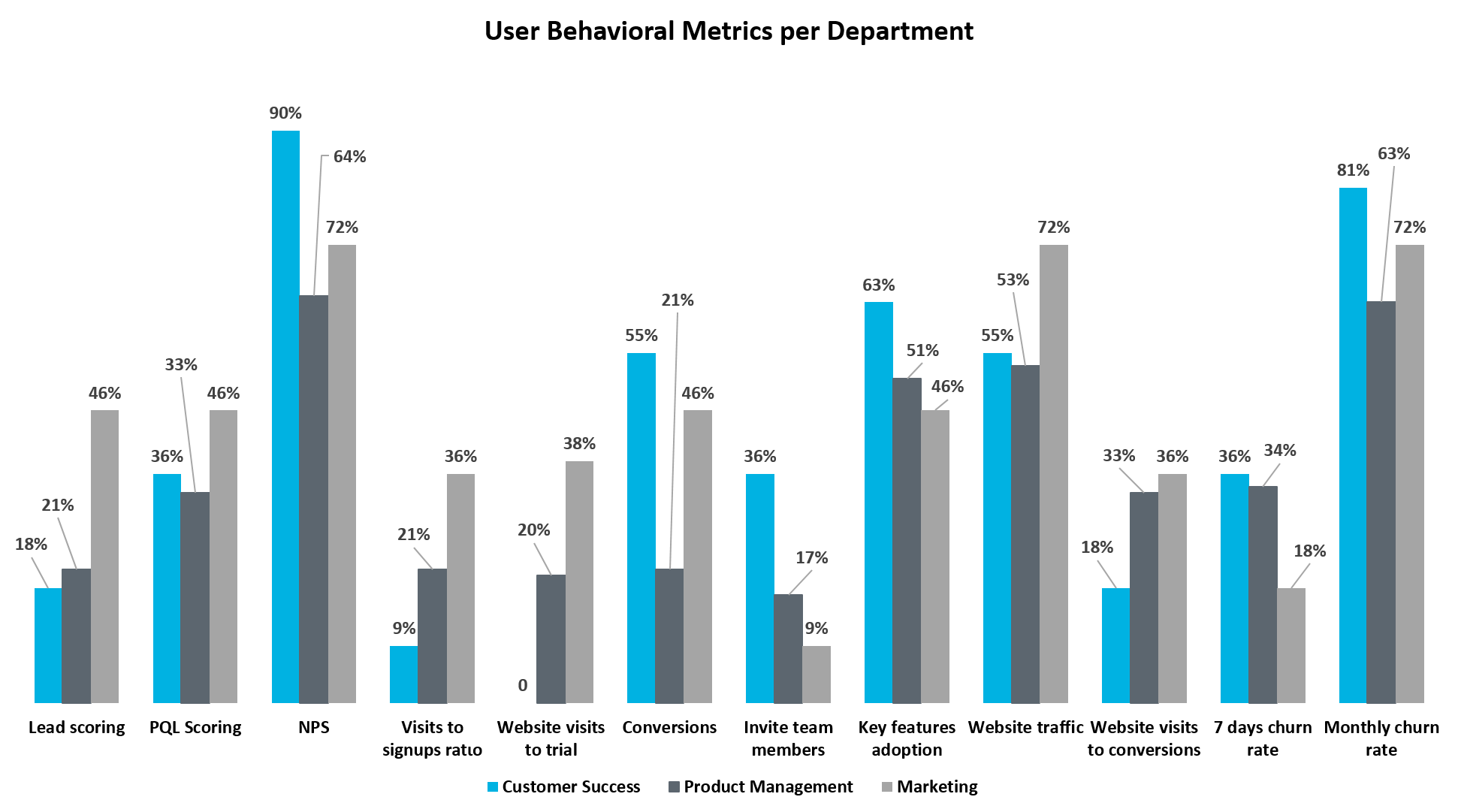Since the beginning of business, we’ve been on a journey to accurately evaluate and predict customer needs.
For people in Product, delivering products your customers love is just one of the challenges. You then have to optimize users’ ROI, increase adoption, and accurately discover your customer journey bottlenecks.
Which features bring the majority of revenue? How should customer-facing teams predict retention and revenue rates based on users’ behavior? How do we measure the effectiveness of onboarding? Are there better ways for us to be doing these things? These are just some of the questions SaaS organizations find themselves asking.
Data has always been the driving force behind SaaS growth. No matter their velocity, organizations rapidly capitalize on sales, marketing, and business data analytics to derive the necessary results in regards to revenue. The rising importance to deliver stellar product experiences, however, forces organizations to adopt a viable monitoring process. There’s a growing need to follow user progression in-app—it reveals actions and patterns that can affect everything from your product roadmap to revenue goals. More now than ever, we need to capitalization on product data to effectively monitor customer health, adoption levels, and user behavior.
Product Data: The Single Source of Truth
While user behavior may not be solely affected by a product’s capabilities, the establishment of product metrics should be used in conjunction with existing business KPIs (Key Performance Indicators). Product-led companies view their product as a source of business growth and therefore see product data as a single source of truth. This data unifies business operations and is used as a force multiplier for each team’s impact on the customer journey. But this doesn’t come without its challenges.
Usual concerns product-led organizations might have are:
- Who owns data on each stage of the customer journey?
- How is product data gathered in real-time and what resources are required?
- Which (in-product) milestones should be defined?
- How to establish an internal feedback loop across and within teams?
Despite the fact that those concerns resonate with companies delivering a product-led GTM (go-to-market) strategy, they are not actually implied across the SaaS ecosystem. Being in a transitional state, the industry comes across many inconsistencies in GTM practices. Organizations are at a crossroads, choosing between current procedures, optimization, or a mindset shift that will lead them to a customer-centric data-driven approach.
How Businesses Today Measure Product Experience
If internal teams fail to adopt product usage metrics to their full extent, product experience will not be evaluated sufficiently. Because product experience is a burgeoning concept, there are yet to be standardized ways to measure success.
ReinventGrowth recently conducted a research study on 40 SaaS organizations and found that businesses use a blend of metrics to evaluate product experience. These 40 SaaS organizations each used their own mix of business, marketing, and product metrics.
Let’s take onboarding for example. We asked our participants whether their onboarding method was self-serve (primarily product-led with in-app guides, walkthroughs, and tutorials) or human-assisted (involves a Customer Success Manager to drive adoption). Then, we asked what behavioral benchmarks they used to measure success.
We found the most popular benchmarks used to measure onboarding success are:
- Monthly Churn Rate
- NPS
- Key Features Adoption
- Emerging product metrics (like PQL Scoring where internal teams assess if prospects usage levels are the expected ones or not)


Current Analytics Programs
The methodology and toolset used to derive the required product data also play an important part in how product experience is evaluated. The majority of organizations use two kinds of product analytics programs:
Fundamental Product Analytics
Those services measure product analytics on multiple dimensions, such as feature or account/user-level measurements. The downside? These analytics fail to measure usage and UI instrumentation measurements and provide a short-sighted view of how user behavior is delivered.
Without the ability to extract detailed behavioral data, companies relying on those programs have to use their engineering teams to extract the required information. In the end, product teams end up having constant tradeoffs regarding resource allocation, increased costs, and delivery of past behavior data.
Advanced Program Analytics
This program is adopted by only a minority of the industry (a mere 20% according to the research results). Advanced program analytics put together quantitative and qualitative measurements by investing in core product analytics. It focuses equally on breadth, depth, efficiency, and frequency of use.
Organizations that adopt this program are able to establish product metrics that complement existing business KPIs.
Product Performance Benchmarks
Even though technology now provides the means to accurately measure product deliverables, the challenge is getting all departments on board. Everyone needs to understand the concept of where the product is currently versus where it might be in the future.
The four product variables below will create consistency across your company and a common language between your internal teams. Monitor these four areas and you’ll be able to uncover insights about your users and use these to develop a product that promotes growth.
-
Breadth of Use
This product variable is an accurate estimation of (team) activation. Breadth evaluates the extent a product is being used on an account level, monitors account health, and helps internal teams proactively manage churn.
Considerations:
- How many team members were invited during trial vs. how many should have to?
- Which roles caused various drop-offs on their first-week activation cohorts and why?
- Where does onboarding overlap and where differentiates per user and why?
-
Depth of use:
The level to which product key features are being used is something that constantly eludes Product Management and Customer Success. Depth evaluates adoption, both on a user and account level.
Considerations:
- Which adoption levels correspond to which user role?
- Are organizations’ internal teams able to reflect usage levels on Net Revenue and/or Net churn?
- How is depth evaluated during trial and post-purchase?
-
Efficiency of Use:
Users visit your product to complete a task. Product teams need to be aware of how easy this is for their users and how often users drop off.
Considerations:
- Are onboarding flows focused on historic usage per user, role and account level and consider when adoption levels increase?
- Does product onboarding decrease customer-facing teams involvement?
- How many milestones have a user to complete until it gets initial value and true value?
-
Frequency of use:
Along the same lines as #3, this product variable monitors how often a feature is used. Monitoring this on an ongoing basis enables you to proactively estimate when users need to be reactivated.
Considerations:
- Which levels of frequency does a user have per role?
- Which features are neglected and why?
- When and why each feature should be used? ( to better estimate the revenues and losses following them)
Conclusion
Product experience assessment is no longer optional. Today’s product-led imperative makes clear that when organizations sleep on business metrics, they leave money on the table. Product metrics redefine customer satisfaction evaluations and enable internal teams to better measure the effectiveness of developments.
Even when a common set of metrics across an organization is set though the job is not done. Each department should find where its metrics complement or align with the rest organizations to establish an effective feedback loop with them. This is the only way to make the optimized delivery of product experience, an intentional effort across the entire organization.
Get real-time product insights with Gainsight PX
You need data if you want to improve your product experience. With Gainsight PX, you can collect and derive insights from your usage data and drive a better experience for your users with in-app engagements. Start a 15-day free trial today!

